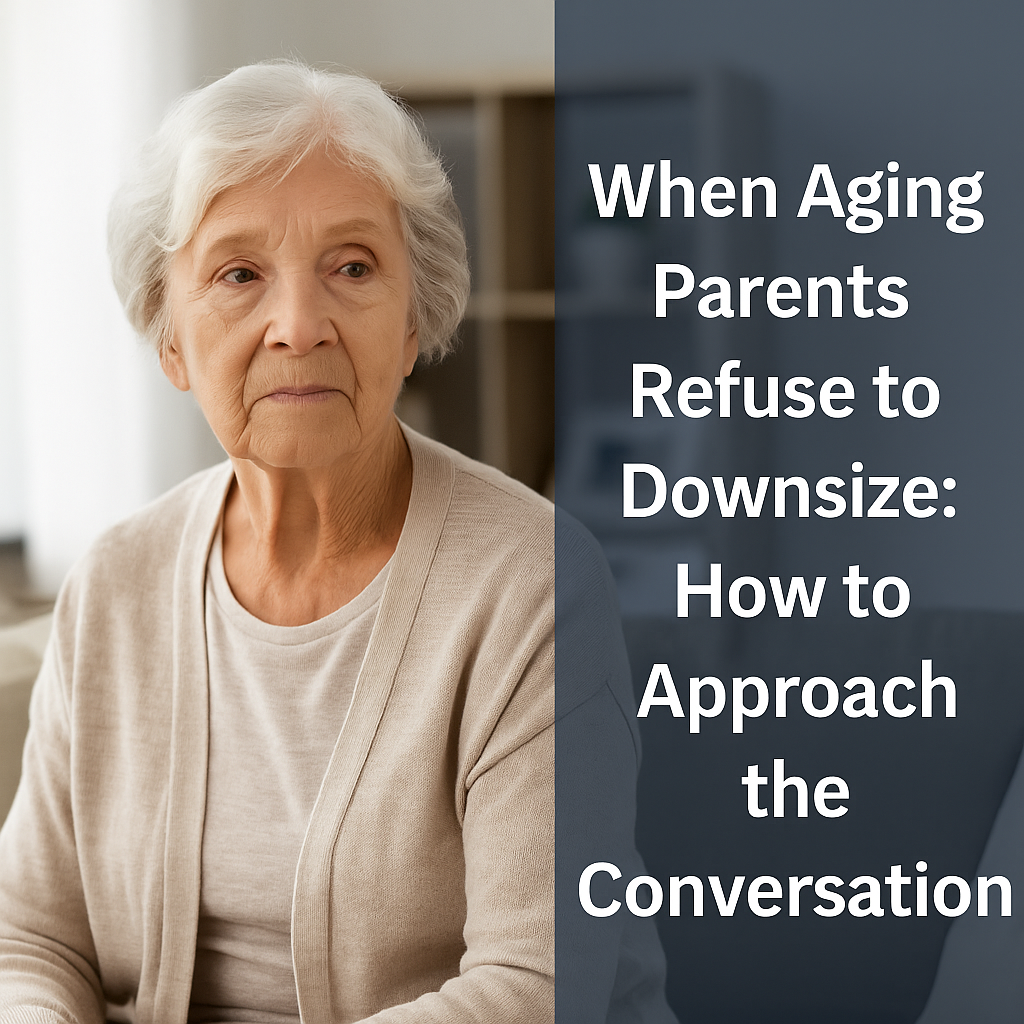As parents age, conversations around downsizing often become necessary—but they’re rarely easy. Many older adults have lived in the same home for decades and may be emotionally attached to their space and belongings. Even when the home is no longer practical or safe, the idea of leaving can be overwhelming.
If you’re navigating a situation where your aging parents are resistant to downsizing, here’s how to approach the conversation with compassion, patience, and practical strategies.
Understand the Emotional Weight
Before offering solutions, it’s important to understand what’s behind the resistance. For many seniors, downsizing feels like giving up independence or letting go of memories. Their home may be a powerful symbol of identity, stability, and comfort.
Acknowledging these emotions—rather than dismissing them—lays the foundation for a more productive dialogue. Empathy goes a long way in easing fears and building trust.
Choose the Right Time and Setting
Timing is key. Avoid bringing up downsizing during a moment of stress or conflict. Instead, plan to talk during a calm, private moment when your loved one is more likely to be receptive.
Use “I” statements to avoid sounding accusatory. For example, say, “I’ve been thinking about how we can make things easier for you around the house,” instead of “You can’t manage this place anymore.”
Highlight Safety and Practical Benefits
Rather than focusing on what they will lose, help your parent see what they will gain. Downsizing isn’t about giving things up—it’s about creating a safer, more manageable living environment.
Explain how a smaller space can:
- Reduce fall risks
- Eliminate overwhelming maintenance
- Be closer to family or medical care
- Improve daily comfort and accessibility
Sometimes reframing the conversation around quality of life rather than loss can make a big difference.
Involve Them in the Process
Control and autonomy are central to aging with dignity. If your parent feels they’re being told what to do, they may become defensive. Involve them in decisions every step of the way. Let them set the pace, choose what to keep or give away, and tour new living options together.
Offer to help with sorting, packing, or finding support services, but make sure they still feel ownership over the decisions being made.
Take It Slow
Downsizing doesn’t have to be all-or-nothing. Start small. Encourage decluttering one room at a time, or begin by sorting items that aren’t used frequently. These small steps can reduce the emotional burden and make the overall transition less intimidating.
Know When to Seek Support
If your parent’s resistance is rooted in fear, grief, or a cognitive condition such as dementia, it may be helpful to involve a neutral third party. Geriatric care managers, therapists, or social workers can provide guidance and support that may be better received than advice from a family member.
At CJ & Associates Care Consulting, we specialize in helping families navigate these tough conversations and transitions with expert care planning, support, and advocacy.
Final Thoughts
Downsizing is never just about moving—it’s about adapting to a new stage of life with respect and dignity. With empathy, planning, and open communication, you can help your aging parent make choices that support their well-being and safety—without feeling forced or rushed.






